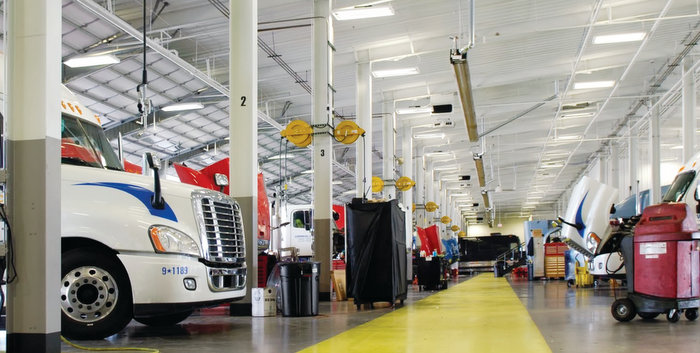[Editor’s Note: This column was penned by guest editor Jason Roanhouse, marketing program manager for Bridgestone Commercial Solutions]

To meet an ongoing host of challenges, fleet managers are taking a progressive approach to the equipment their companies use to move freight. Today, that focus includes tires and tire management programs. Driving this activity are things like CSA and EPA’s SmartWay initiative, which place tires in a high visibility position as key safety and fuel economy items.
Regulatory activity is impacting tire design. Emissions-compliant diesel engines, along with natural gas engines, have added weight to vehicles, requiring new thinking about tires. Reduced stopping distance regulations have led to design changes as well.
Other factors impacting tire design have come from the desire to lower fuel costs. For example, the addition of auxiliary power units on over-the-road tractors, which add more weight to steer axles, affects how a vehicle is configured. Similarly, the adoption of technologies such as 6×2 axle configurations, lightweight components, and smaller tractor-to-trailer gaps are changing weight profiles and are playing a role in tire performance.
As a whole, the truck tire industry continues to rise to the challenge with technology that eliminates variables for a variety of industry segments and vocations. Working with fleets in numerous segments and vocations, as well as truck, tractor and trailer OEMs, tire manufacturers are refining their products, creating tires that are targeted for use on specific wheel positions and on vehicles assigned to different tasks and routes by long haul, short haul and vocational fleets.
While each tire manufacturer develops unique products, universal design goals are driving the industry as a whole. Factors that are impacting design elements include what a customer expects to do with a tire, and whether fuel economy, traction, wear or any combination of tire attributes are considerations.
Enabling better tire designs and specifications as well are new tools for evaluating how trucks, tractors and trailers interact with tires and how casings, rubber compounds and tread patterns perform in different operations.
Along with revisiting tire specs to meet operating criteria and lower costs, progressive fleets are also employing highly effective tire management practices. While the basics of tire maintenance remain in place, including ensuring proper wheel balance, air pressure and vehicle alignment, fleets are taking a holistic view of new tires and retreads as assets. By working with their dealer and/or tire manufacturer, fleets are implementing structured tire programs that maximize performance and aim to deliver lower operating costs.
For today’s fleets, in all vocations, taking into account equipment changes, operational needs, cost control concerns and environmental impact is leading to better tire design, specification decisions and more effective tire management processes.













